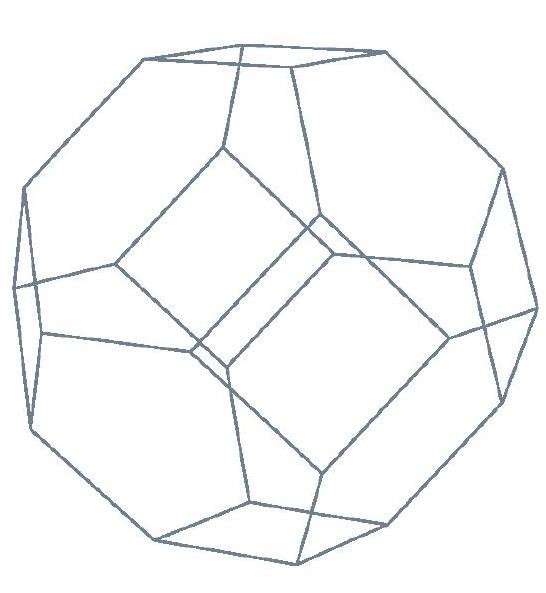![]()

The truncated octahedral MD cell.
This is one of the more unusual MD cells available in DL_POLY, but it has the advantage of being more nearly spherical than most other MD cells. This means it can accommodate a larger spherical cutoff for a given number of atoms, which leads to greater efficiency. This can be very useful when simulating (for example) a large molecule in solution, where fewer solvent molecules are required for a given simulation cell width.
The principal axes of the truncated octahedron (see figure) pass through the centres of the square faces, and the width of the cell, measured from square face to square face along a principal axis defines the width D of the cell. From this, the cell vectors required in the DL_POLY_2 CONFIG file are simply: (D,0,0), (0,D,0), (0,0,D). These are also the cell vectors defining the enscribing cube, which posseses twice the volume of the truncated octahedral cell. Once again, the atomic positions are defined with respect to the cell centre.
The truncated octahedron can be used with the Ewald summation method.
![]()